15 types of keywords: Complete SEO guide for 2025
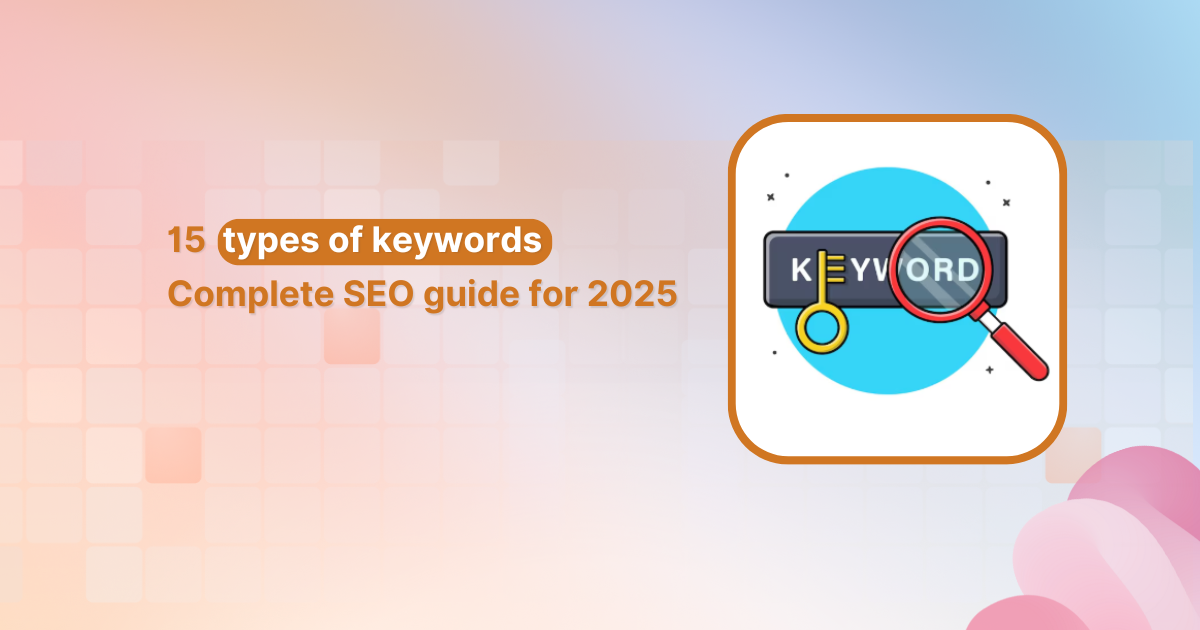
Keywords are the bridge between what people search for and the content you create. Understanding the various types of keywords is therefore essential for developing an effective SEO strategy that attracts targeted traffic and converts visitors into customers.
In this comprehensive guide, you’ll discover the 15 most important types of keywords, learn how to find them, and understand precisely how to use each type to boost your search rankings.
Why understanding keyword types matters
Before exploring specific types, let’s first understand why this knowledge is crucial for your SEO strategy.
- Better content planning: Each keyword type requires different content formats. Informational keywords are best suited for educational blog posts, while transactional keywords are most effective on product pages.
- Improved user experience: Matching content to search intent (the reason behind someone’s search) dramatically enhances user satisfaction and engagement metrics.
- Strategic resource allocation: Knowing which keywords are easier to rank for helps you prioritize your content creation efforts for maximum ROI.
- Competitive advantage: Most websites randomly target keywords without understanding intent. Strategic keyword selection puts you ahead of 90% of your competition.
Types of keywords: Quick reference guide
Here’s a complete overview of 15 essential keyword types for SEO success.
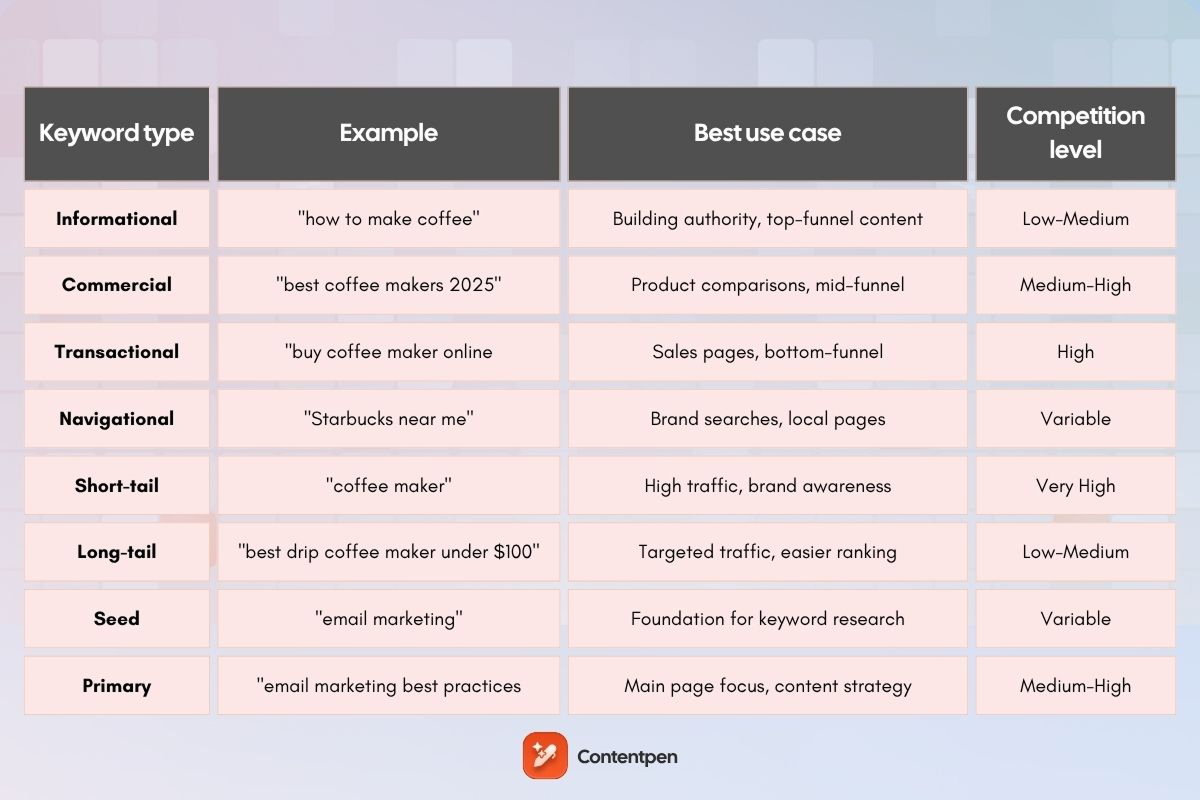

Pro Tip: Combine multiple keyword types in your SEO strategy for maximum impact and comprehensive market coverage.
Keywords by search intent: The foundation of modern SEO
Search intent is the most efficient way to categorize keywords. Google’s algorithm prioritizes content that matches what users actually want to find.
1. Informational keywords
Informational keywords are search queries where users want to learn something, obtain answers, or gain a deeper understanding of a topic. These keywords help you build authority and trust with potential customers early in their journey.
While they don’t directly drive sales, they’re ideal for attracting individuals who may become customers later and establishing your brand as a trusted resource within your industry.
Examples:
- “What is AI in content marketing?”
- “How to start a blog”
- “Coffee brewing methods explained”
- “Why is SEO important?”
Intent signals: Typically contain words such as “how to,” “what is,” “why does,” “guide to,” “tutorial,” or “tips.”
Content formats: Blog posts, guides, tutorials, FAQ pages, and educational videos.
How to find them:
- Use Google’s “People Also Ask” feature for your topic.
- Search AnswerThePublic for question-based keywords.
- Filter keyword tools for “informational” intent.
- Check forums like Reddit and Quora for common questions.
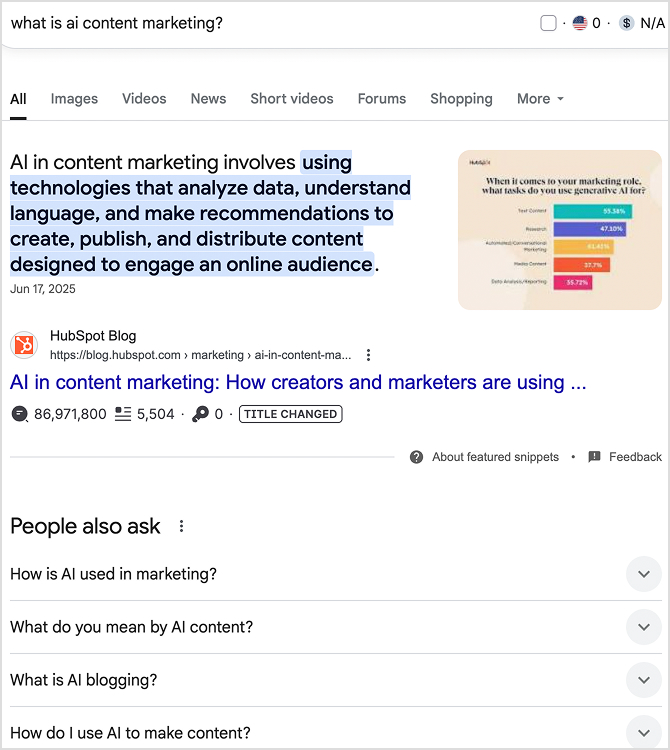
Optimization tips:
- Create comprehensive, well-researched content.
- Answer the question directly in the first paragraph.
- Include related subtopics to cover the topic thoroughly.
- Use clear headings and formatting for easy scanning.
2. Commercial keywords
Commercial keywords are search queries from users who are considering a purchase but require additional information before making a decision. These keywords target high-intent users who are close to making a purchase decision and often have higher conversion rates than informational terms. They represent the crucial middle-funnel stage where prospects are actively evaluating options.
Examples:
- “Best CRM software for small business”
- “iPhone vs Samsung comparison”
- “Top 10 coffee grinders 2025”
- “Semrush alternatives”
Intent signals: Words like “best,” “top,” “review,” “comparison,” “vs,” “alternative,” and “pros and cons.”
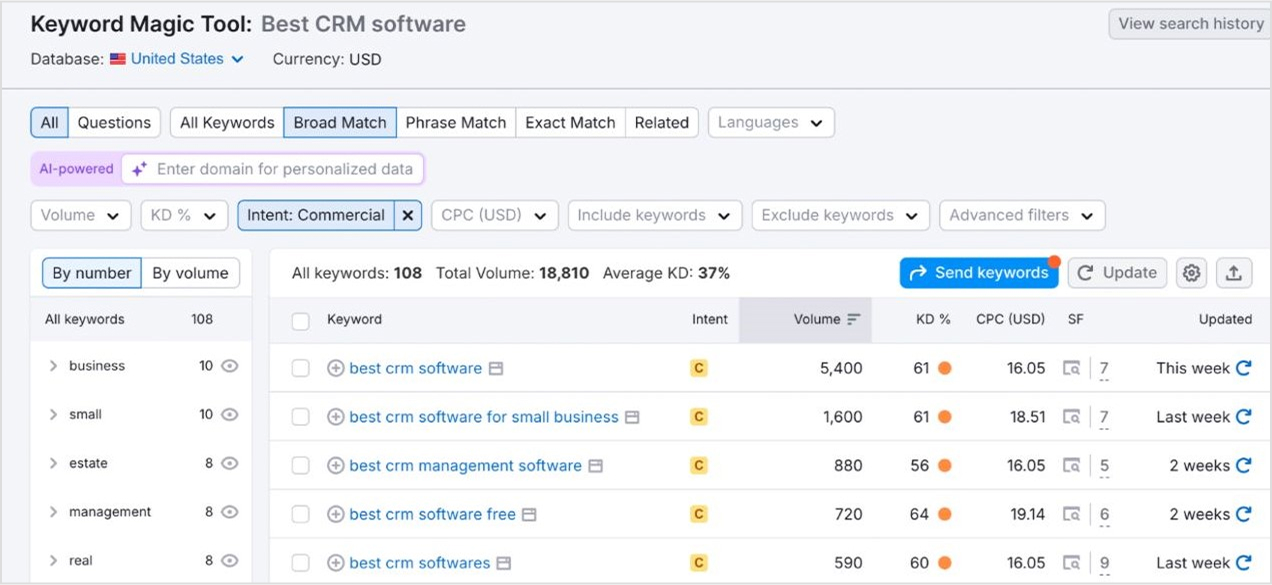
Content formats: Product comparisons, review articles, buyer’s guides, and “best of” lists.
How to find them:
- Add commercial modifiers to your seed keywords (best + [product]).
- Look for keywords with commercial intent flags in keyword tools.
- Monitor what products/services people compare to yours.
Optimization tips:
- Include detailed product specifications and comparisons.
- Add pros and cons sections.
- Use high-quality images and comparison tables.
- Include clear calls to action toward your products.
- Add trust signals like reviews and testimonials.
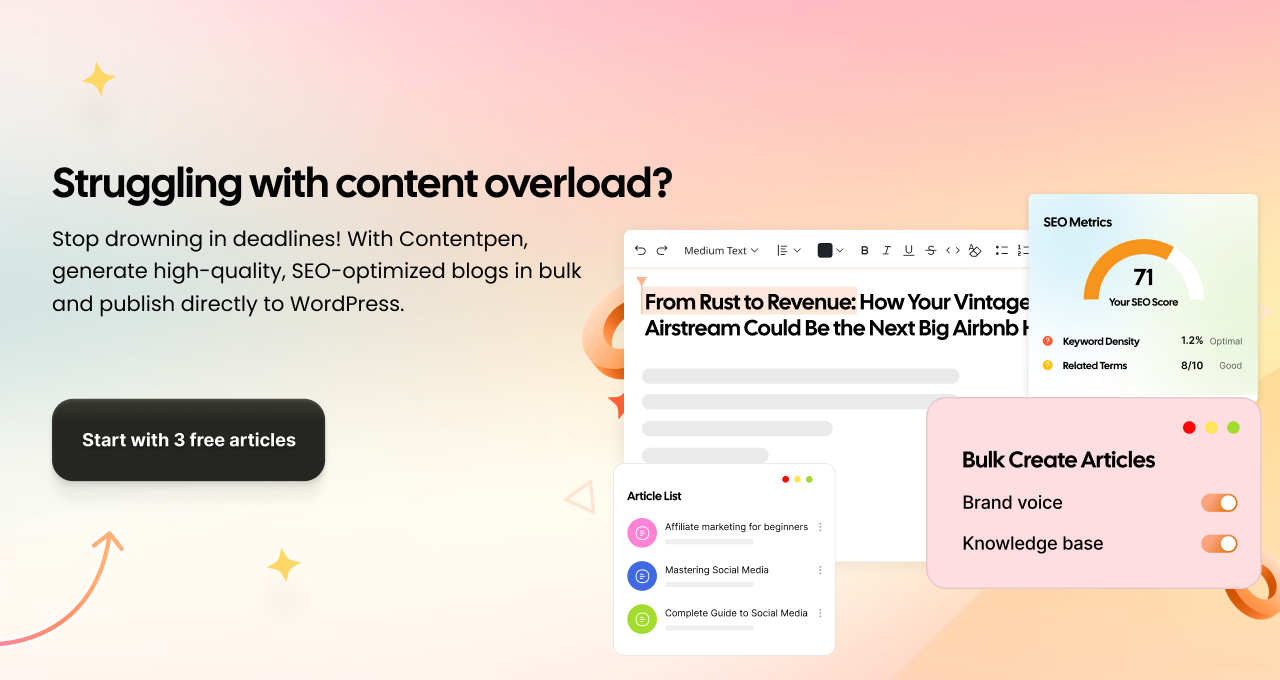
3. Transactional keywords
Transactional keywords are search queries from users who are ready to take action, typically making a purchase or signing up for something. These keywords have the highest conversion potential, as users searching for these terms are likely to have their credit cards ready and know what they want. They represent the bottom of the marketing funnel, where prospects are ready to become customers.
Examples:
- “Buy MacBook Pro 2025.”
- “Download free SEO template”
- “Order pizza online”
- “Subscribe to Netflix”
Intent signals: Action words like “buy,” “order,” “purchase,” “download,” “subscribe,” “get,” and “shop.”
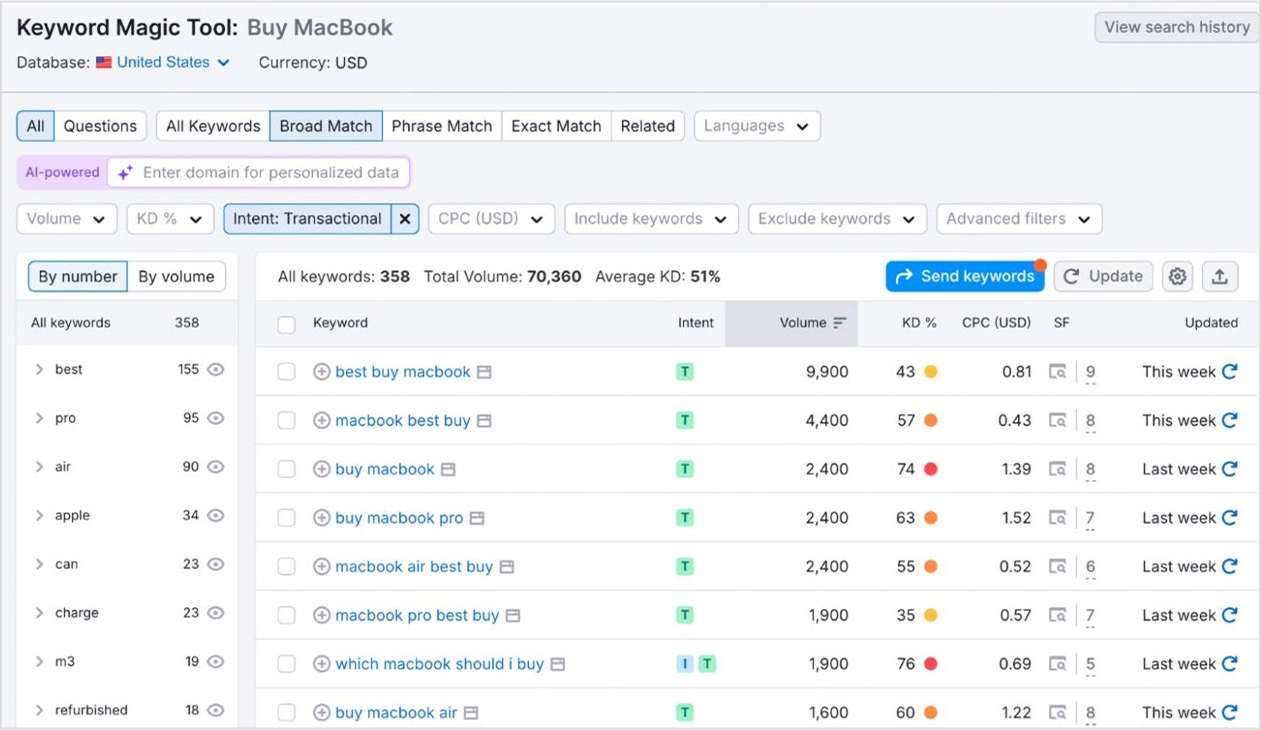
Content format: Product pages, service pages, landing pages, and checkout pages.
How to find them:
- Add buying modifiers to your product keywords.
- Check what transactional terms competitors rank for.
- Use Google Ads Keyword Planner to find high-CPC terms (indicates commercial value).
- Monitor your sales team’s most common customer requests.
Optimization tips:
- Create dedicated landing pages for each transactional keyword.
- Include transparent pricing and purchase options.
- Minimize distractions and focus on conversion.
- Add urgency elements (limited time offers, stock levels).
- Ensure fast page loading and mobile optimization.
4. Navigational keywords
Navigational keywords are search queries where users want to find a specific website, brand, or page. If people are searching for your brand, you want to capture that traffic. For other brands, these keywords are usually not worth targeting unless you’re creating comparison content. They’re essential for brand protection and controlling your online presence.
Examples:
- “ContentStudio login”
- “Amazon customer service”
- “Nike official website”
- “Gmail sign in”
Intent signals: Brand names, website names, specific page types (“login,” “contact,” “support”).
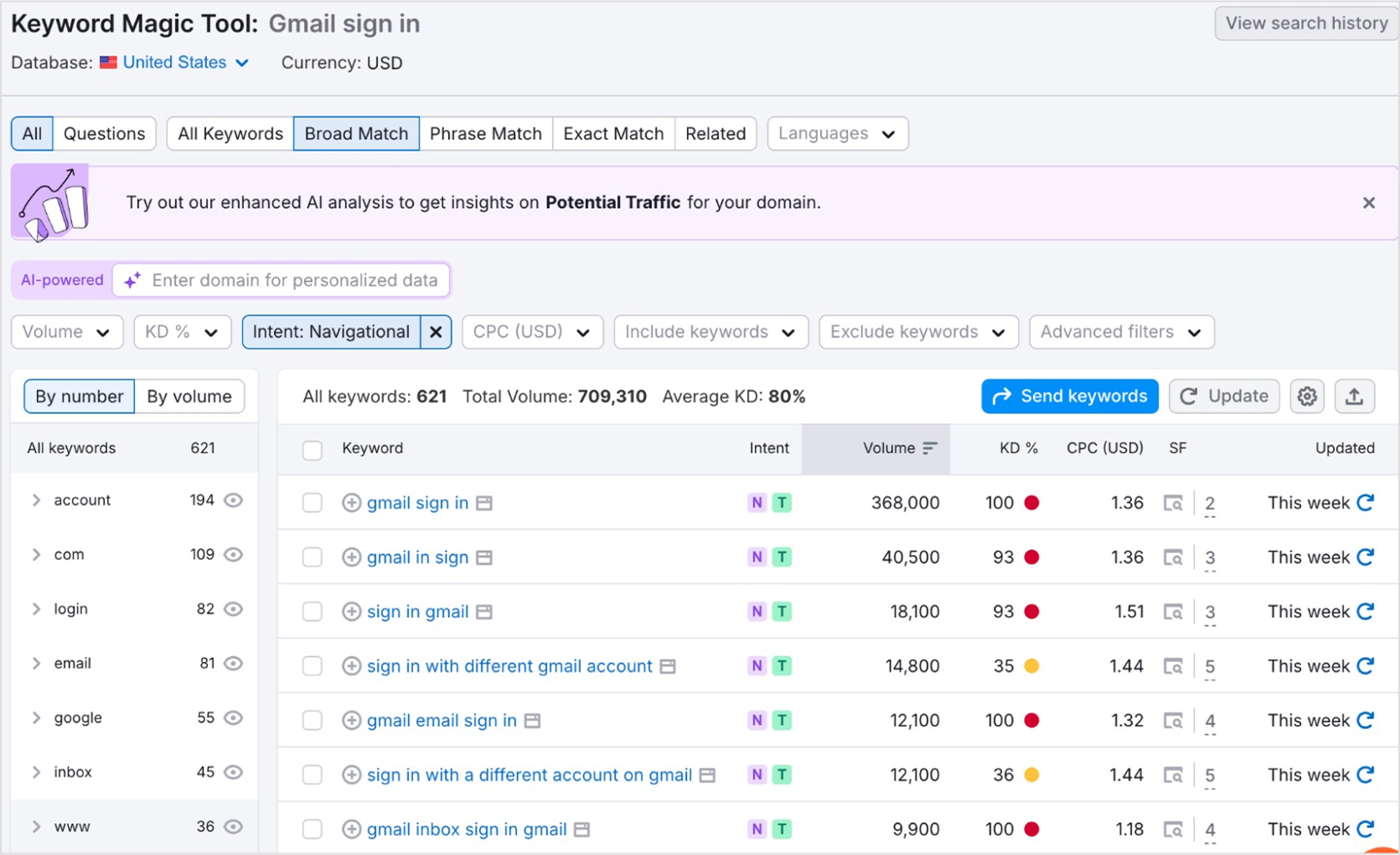
Content format: Homepage, brand pages, specific landing pages.
How to find them:
- Monitor searches for your brand name and variations.
- Check Google Search Console for branded search terms.
- Use keyword tools to find “brand + modifier” combinations.
- Track misspellings of your brand name.
Optimization tips:
- Ensure your official pages rank #1 for your brand terms.
- Create pages for familiar brand + modifier searches.
- Optimize for voice search versions of your brand name.
- Monitor and protect against negative SEO targeting your brand.
Keywords by length and specificity
The length of a keyword often correlates with its competitiveness and specificity.
5. Short-tail keywords (Head Terms)
Short-tail keywords are broad keywords with 1-3 words that have high search volume but vague intent. While challenging to rank for, these keywords can drive significant traffic and help establish your industry’s topical authority. They’re essential for long-term SEO strategy and brand visibility, though they typically have lower conversion rates due to their broad nature.
Examples:
- “Healthy food recipes”
- “SEO tools”
- “running shoes”
- “digital marketing”
Characteristics:
- High monthly search volume (10,000+ searches).
- Very competitive.
- Broad, unclear intent.
- Lower conversion rates.
How to find them:
- Start with your primary business categories.
- Use Google Autocomplete for basic terms.
- Check what broad terms competitors rank for.
- Think about how customers describe your industry.
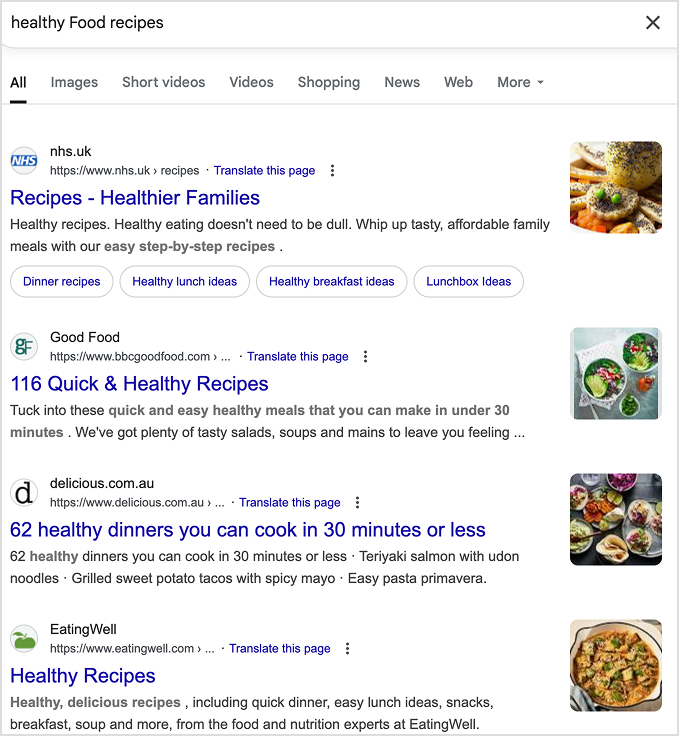
Optimization strategy:
- Target them with comprehensive pillar pages.
- Create topic clusters around these terms.
- Focus on long-term ranking goals.
- Ensure high domain authority before targeting.
6. Long-tail Keywords
Long-tail keywords are specific phrases with four or more words that have lower search volume but more apparent intent. These keywords are often easier to rank for and attract highly qualified traffic, making them perfect for new websites to build authority. They typically have higher conversion rates because they capture users with particular needs and intentions.
Examples:
- “Best espresso machine under $500”
- “How to optimize blog posts for SEO”
- “Organic dog food for sensitive stomachs”
- “Email marketing automation for e-commerce”
Characteristics:
- Lower monthly search volume (usually under 1,000).
- Less competitive.
- Specific, clear intent.
- Higher conversion rates.
How to find them:
- Use Google Autocomplete and “People Also Ask”.
- Check AnswerThePublic for question-based long-tail terms.
- Analyze your Google Search Console data for long phrases.
- Use keyword tools with long-tail filters.

Optimization strategy:
- Create specific, focused content for each long-tail term.
- Group related long-tail keywords into topic clusters.
- Target multiple long-tail variations on single pages.
- Use them in FAQ sections and subheadings.
Keywords by research strategy
These keyword types form the foundation of your research process.
7. Seed keywords
Seed keywords are basic terms that describe your business, industry, or topics you want to rank for. They’re the starting point for finding more specific keywords and determining what other keywords you’ll discover during research. Choosing the right seed keywords is crucial because incorrect seeds can lead to wasted time targeting irrelevant terms that don’t align with your business goals.
Examples:
- “Email marketing” (for a marketing agency)
- “Yoga” (for a fitness blog)
- “Coffee” (for a coffee shop)
- “Accounting software” (for a SaaS company)
- Auto repair (for windshield replacement)
How to find them:
- Brainstorm core business terms.
- Check your website’s navigation menu.
- Ask customers how they describe your products.
- Look at competitor websites for category names.
- Use your industry’s common terminology.
Best practices:
- Start with 5-10 seed keywords per topic.
- Include both product terms and problem-focused terms.
- Consider different ways customers might describe the same thing.
- Validate seeds by checking if they generate relevant keyword suggestions.
8. Primary Keywords
Primary keywords are the main keywords you want a specific page to rank for. Each page should have one primary keyword that guides the content strategy and prevents keyword cannibalization (multiple pages competing for the same term). Having an explicit primary keyword provides focus for your content creation and helps search engines understand the fundamental topic of your page.
Examples:
- Primary keyword for a blog post: “email marketing best practices”
- Primary keyword for a product page: “project management software”
- Primary keyword for a service page: “SEO audit”
How to choose them:
- Pick keywords with decent search volume (varies by industry).
- Ensure a manageable competition level.
- Match search intent with your content type.
- Consider business value and conversion potential.
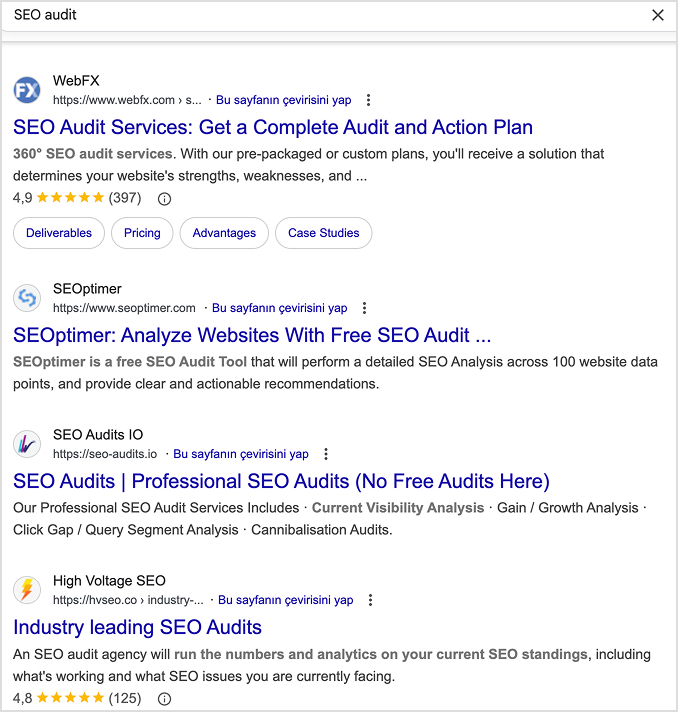
Optimization strategy:
- Include in title tag, H1, and URL.
- Mention naturally in the first paragraph.
- Use in image alt text and meta description.
- Don’t overuse, focus on natural, helpful content.
9. Secondary Keywords
Secondary keywords are related terms that support your primary keyword and help you rank for multiple variations. They enable you to cover topics comprehensively and capture additional search traffic with related intent, while also helping search engines better understand the full scope and context of your content.
Examples:
If the primary keyword is “email marketing best practices,” then secondary keywords can be:
- “email marketing tips”
- “effective email campaigns”
- “email marketing templates”
- “email marketing platforms”
How to find them:
- Use “People Also Ask” and “Related Searches” on Google.
- Check keyword tool suggestions for your primary term.
- Look at what terms top-ranking pages also rank for.
- Use Google Search Console to find terms your existing content ranks for.
Optimization strategy:
- Include in H2 and H3 subheadings.
- Use naturally throughout the body content.
- Add to image alt text and captions.
- Use as an internal link’s anchor text.
Keywords by competition and opportunity
Understanding keyword difficulty helps you prioritize your efforts.
10. Low-competition keywords
Keywords that are relatively easy to rank for due to lower competition from other websites.
Characteristics:
- Lower keyword difficulty scores (typically under 30).
- Fewer high-authority sites ranking.
- Often longer, more specific phrases.
- May have lower search volume but higher conversion potential.
Examples:
- “Best project management software for remote teams under 50 people”
- “How to optimize a Shopify store for voice search”
- “Email marketing automation for B2B SaaS companies”
How to find them:
- Use keyword difficulty filters in SEO tools (set max difficulty to 20-30).
- Target long-tail variations of competitive terms.
- Look for newly trending topics before they become competitive.
- Focus on niche-specific terms in your industry.
Strategic advantages:
- Faster ranking results for new websites.
- Higher chance of reaching page 1.
- Often, more targeted, qualified traffic.
- Suitable for building initial authority and traffic.
11. Trending Keywords
Search terms experiencing rapid growth in search volume are often related to current events, new technologies, or seasonal trends.
Examples:
- “ChatGPT for business” (emerged in 2025)
- “iOS 17 features” (seasonal around Apple releases)
- “Sustainable packaging solutions” (growing environmental trend)
- “Remote work productivity tools” (grew during pandemic)
How to identify them:
- Use Google Trends to spot rising search terms.
- Monitor social media for emerging topics in your industry.
- Check keyword tools for terms with growth indicators.
- Follow industry news and technological developments.
- Set up Google Alerts for industry keywords.
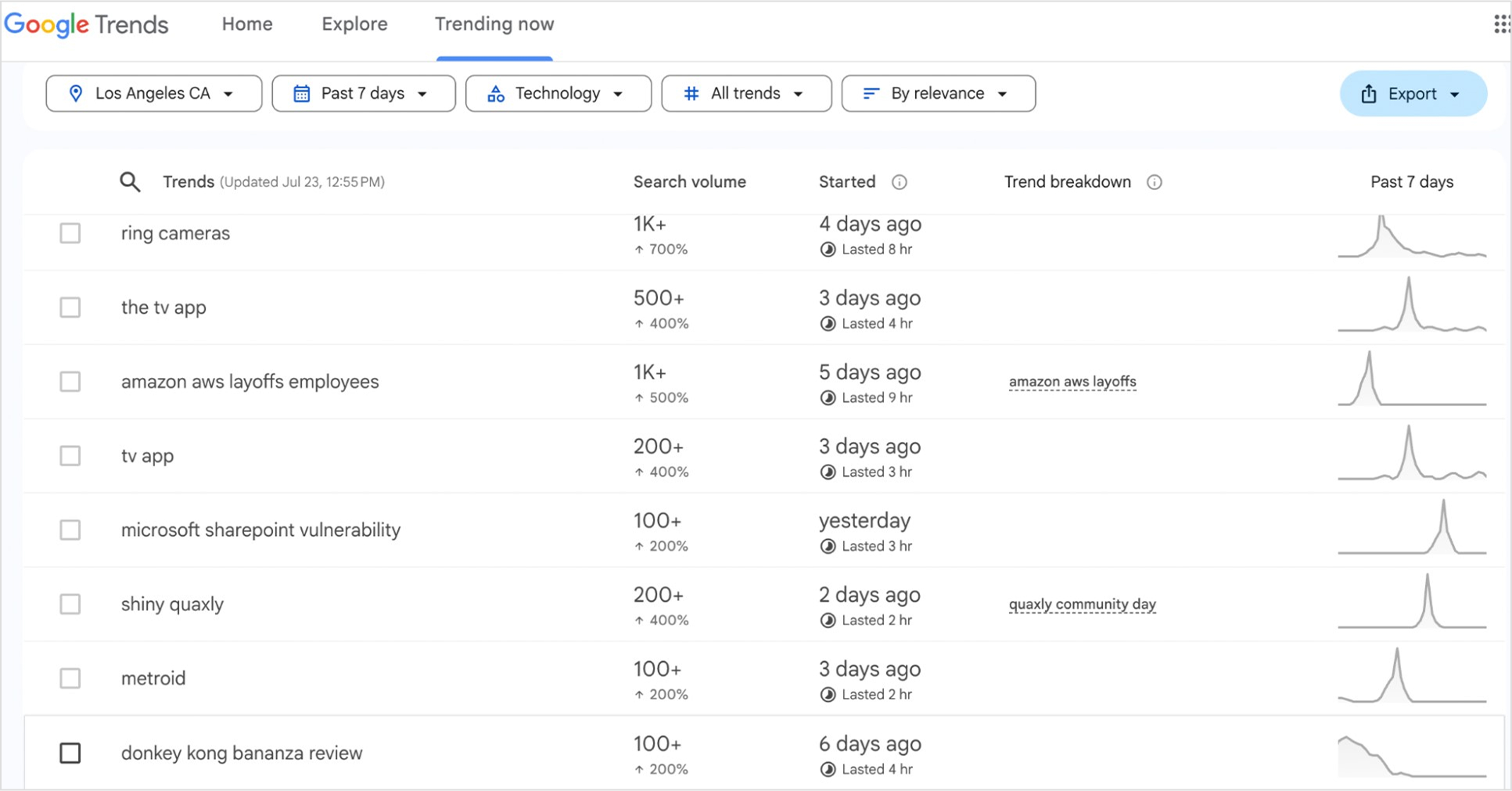
Why they’re valuable:
- Lower competition in the early stages.
- Opportunity to become an authority on new topics.
- Potential for viral content and backlinks.
- Can establish thought leadership.
Risks to consider:
- Maybe temporary trends with short lifespans.
- Could become highly competitive quickly.
- Might not have lasting search volume.
- May not align with your business goals.
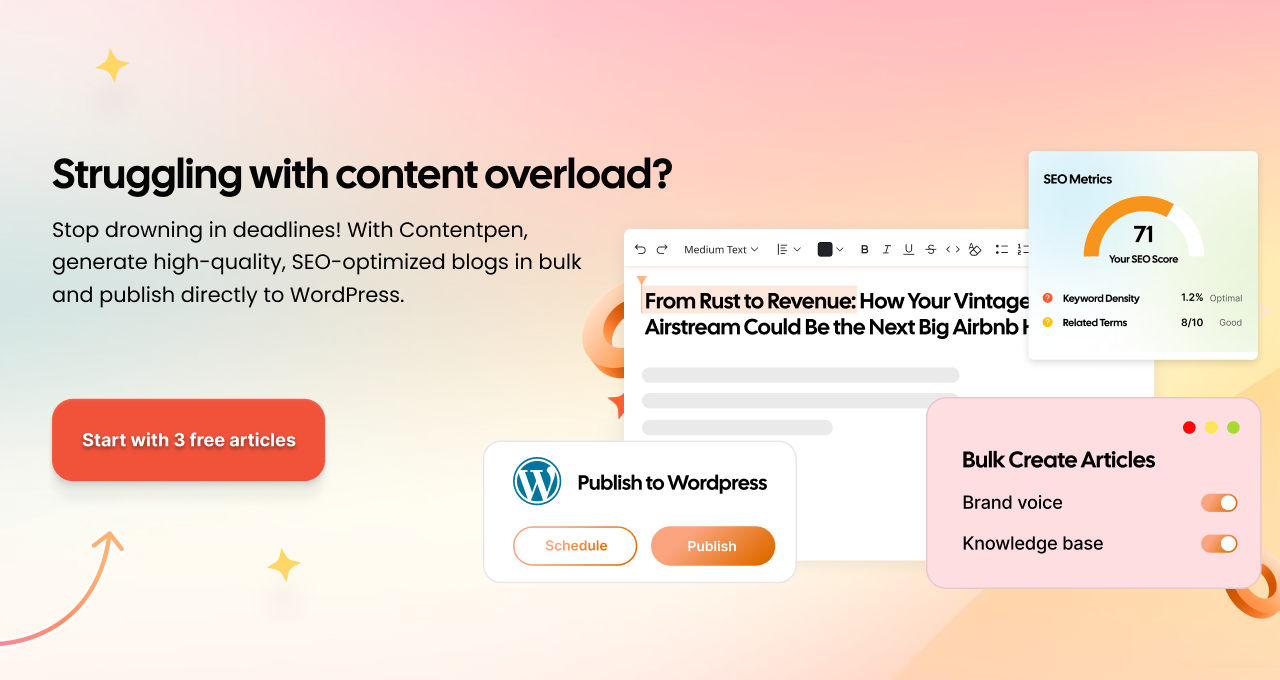
Keywords by brand association
Brand-related keywords require different strategies depending on ownership.
12. Branded keywords
Branded keywords are search terms that include your brand name, product names, or other branded terms specific to your company. These keywords typically have high conversion rates since users already know your brand, are easier to rank for because you own the brand, and are essential for brand protection and control. They often indicate bottom-funnel traffic with strong purchase intent.
Examples:
- “Nike running shoes”
- “Mailchimp email templates”
- “Contentstudio free tools”
- “Tesla Model 3 review”
How to optimize for them:
- Ensure your official pages rank #1 for brand terms.
- Create pages for brand + product combinations.
- Monitor for negative content ranking for your brand terms.
- Optimize for brand + location combinations if relevant.
Types of branded keywords to target:
- Brand name alone
- Brand + product categories
- Brand + “review,” “pricing,” “features”
- Brand + location modifiers
- Common misspellings of your brand
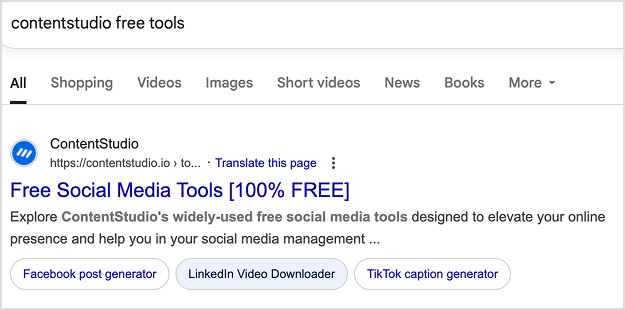
13. Non-branded keywords
Non-branded keywords are generic terms that don’t include any specific brand names but relate to your industry, products, or services. They’re essential for capturing users who are unfamiliar with your brand, typically have higher search volume than branded terms, and are crucial for market expansion and establishing authority in your category. While usually more competitive, they’re essential for long-term growth.
Examples:
- “Email marketing software” (instead of “Mailchimp”)
- “Running shoes” (instead of “Nike running shoes”)
- “Project management tool” (instead of “Asana”)
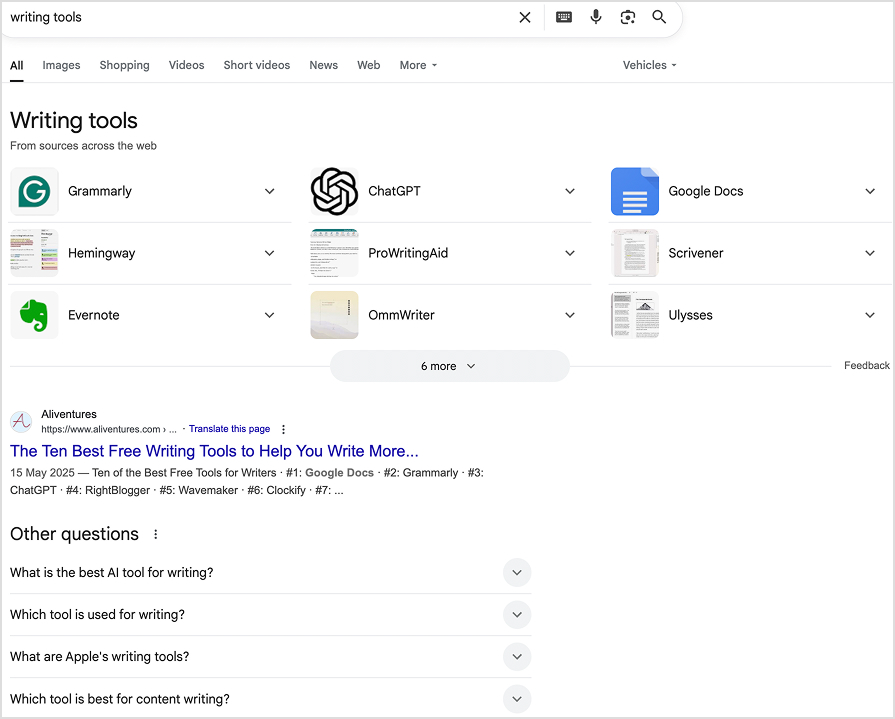
Competition considerations:
- Usually more competitive than branded terms.
- Require stronger content and SEO efforts.
- May have lower initial conversion rates.
- Important for long-term growth.
Keywords by location
Local and geographic keywords are crucial for location-based businesses.
14. Local keywords
Local keywords are search terms that include specific geographic locations, such as cities, neighborhoods, or regions. They’re essential for local businesses, often trigger Google’s local pack results, usually have high commercial intent, and face less global competition. These keywords are crucial for companies that serve specific geographic areas and want to attract nearby customers.
Examples:
- “Pizza delivery Manhattan”
- “Dandelion chocolate, San Francisco”
- “Wedding photographers San Francisco”
- “SEO agency London”
Types of local keywords:
- Service + city (“plumber Boston”)
- Service + neighborhood (“hair salon SoHo”)
- Service + “near [landmark]” (“coffee shop near Central Park”)
- Service + zip code (“restaurants 90210”)
How to find them:
- Combine your primary services with local area names.
- Use Google My Business insights to see how people find you.
- Check local competitor websites for location terms they target.
- Use local keyword research tools.
15. “Near Me” keywords
“Near Me” keywords are search queries where users add “near me” to find local businesses or services in their vicinity. These keywords have extremely high commercial intent, representing mobile-first searches with immediate needs that often lead to same-day visits or purchases, and are growing rapidly with the adoption of voice search. They’re invaluable for local businesses seeking to capture customers who are ready to take immediate action.
Examples:
- “Coffee shops near me”
- “Auto repair near me”
- “Gyms near me”
- “Italian restaurants near me”
Optimization strategies:
- Ensure Google My Business is fully optimized.
- Include location information throughout your website.
- Create location-specific landing pages.
- Optimize for mobile and page speed.
- Encourage customer reviews and local citations.
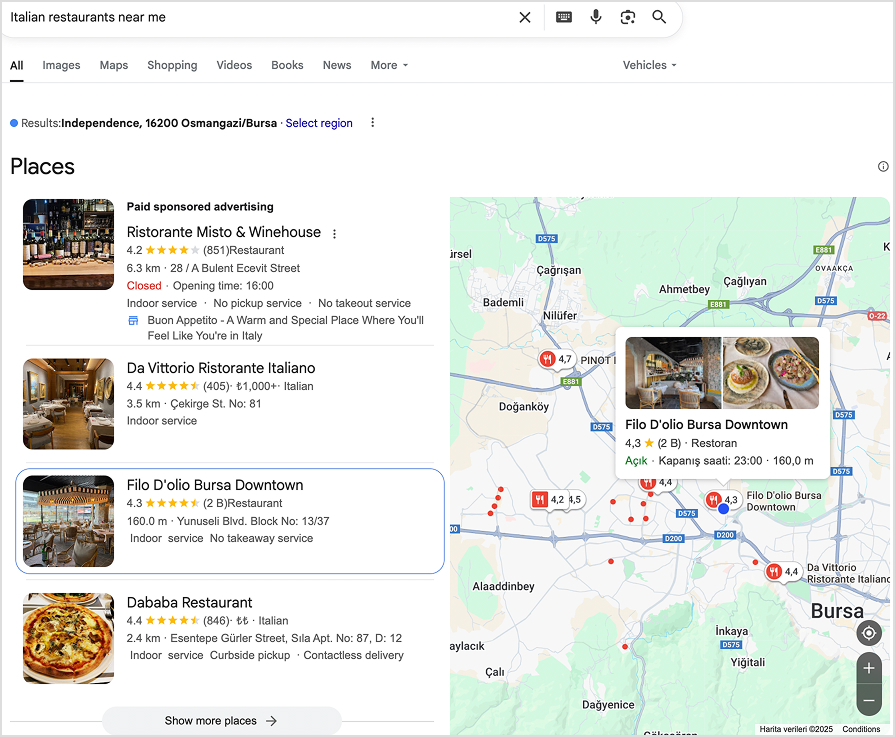
How to find different types of keywords:
Free methods
- Google Autocomplete: Start typing your seed keyword in Google and note the suggestions that appear. These represent real searches people are making.
- People Also Ask: Look for the expandable questions that appear in search results. Each question represents a potential keyword opportunity.
- Related Searches: Scroll to the bottom of Google search results to find related search terms.
- Google Search Console: Check what keywords your website already ranks for. Look for opportunities to optimize for terms that rank on the first two pages of the search results.
- Competitor Analysis: Visit your competitors’ websites and note the terms they optimize for in titles, headings, and content.
Measuring keyword performance
Key metrics to track
1. Rankings: Monitor position changes for target keywords to see if your optimization efforts are working. Track both individual keyword positions and overall ranking trends.
2. Organic Traffic: Track search traffic from different keyword groups to understand which types of keywords drive the most visitors to your site.
3. Click-Through Rate (CTR): Measure how compelling your titles and meta descriptions are by monitoring what percentage of people click on your results when they appear in search.
4. Conversion Rate: Track which keywords drive the most valuable actions (purchases, signups, downloads) to focus your efforts on high-converting terms.
5. Search Impression Share: See how often you appear for target terms compared to total search volume, helping identify growth opportunities.
Tools for tracking
1. Contentpen – AI blog writer tool
- AI-powered keyword discovery and content optimization.
- Comprehensive keyword analysis with search volume data.
- Integrated content creation tools for keyword-optimized blog posts.
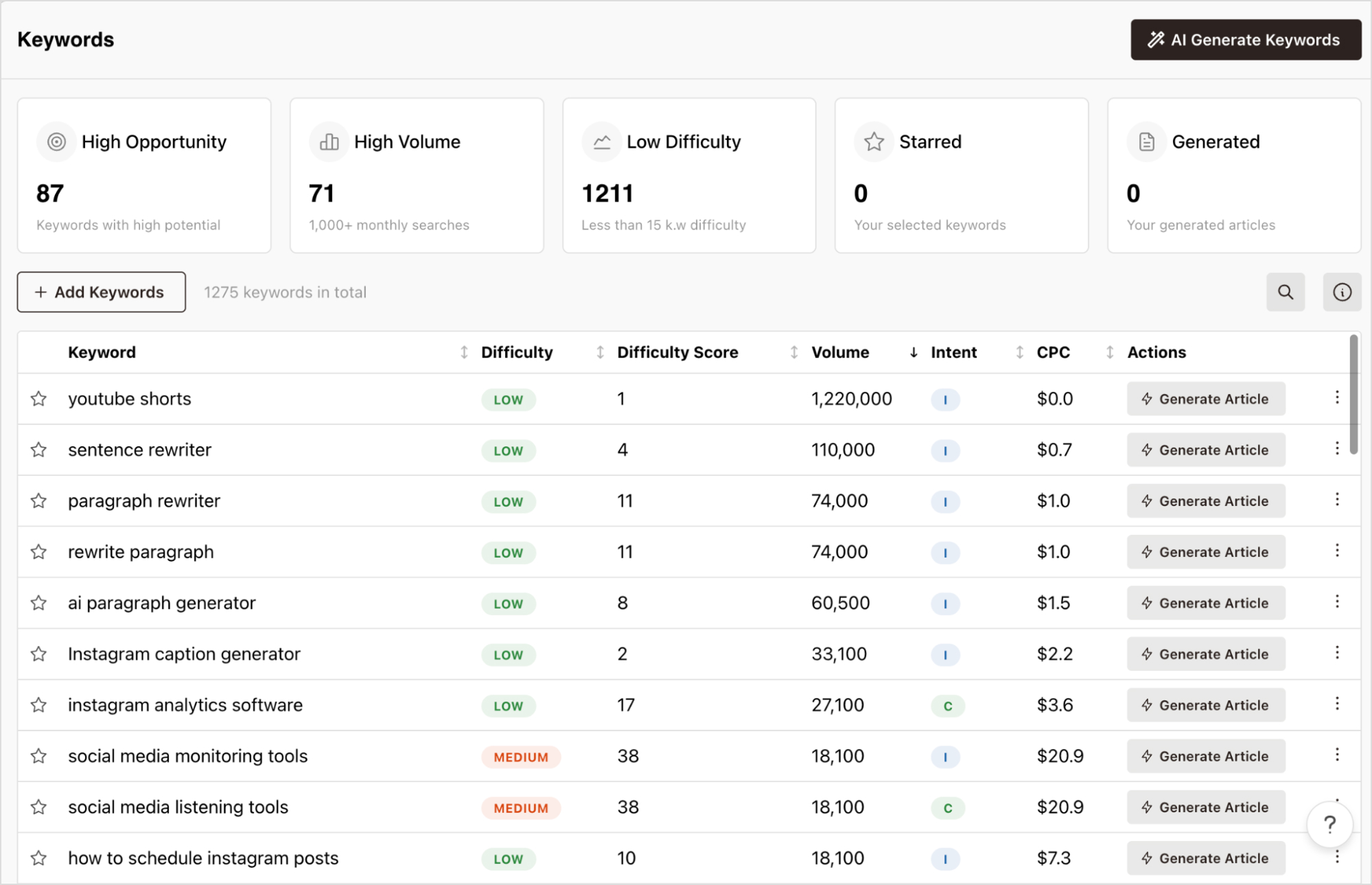
2. Google search console
- Free tracking of rankings, impressions, and clicks.
- Shows which keywords already drive traffic to your site.
- Identifies opportunities for improvement.
3. Usermaven
- Detailed traffic and conversion tracking.
- Revenue attribution to specific keywords.
- User behavior analysis for keyword-driven traffic.
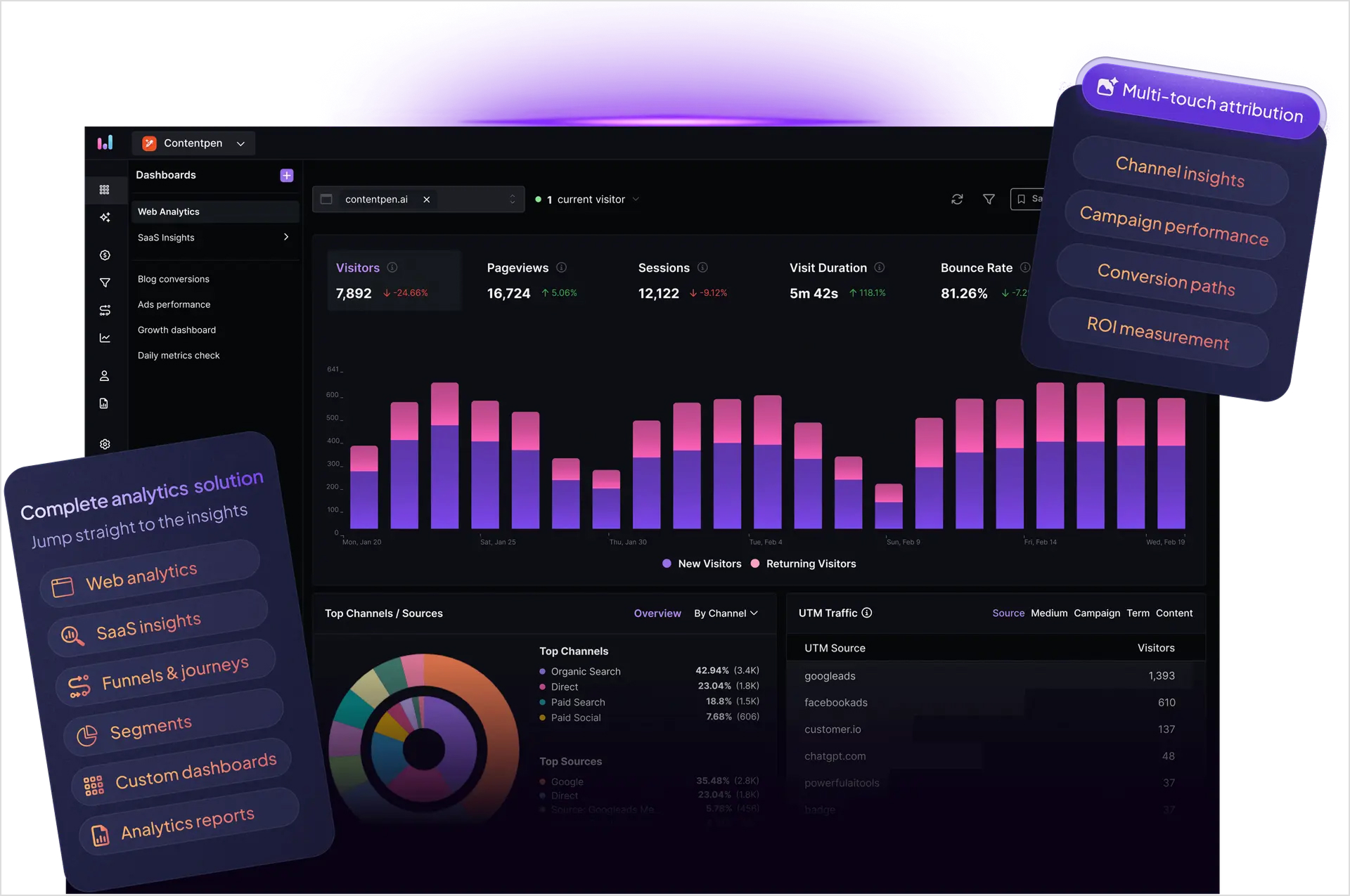
4. SEMrush
- Automated position monitoring for target keywords.
- Historical ranking data and trend analysis.
- Competitor ranking comparisons.
5. Ahrefs
- Ongoing opportunity identification.
- Search volume and competition tracking.
- New keyword discovery and trend monitoring.
Conclusion
Remember: a successful keyword strategy isn’t about ranking for the most keywords, it’s about ranking for the right keywords that drive qualified traffic and conversions for your business.
The SEO landscape continues evolving, but focusing on user intent and providing genuine value will always be the foundation of effective keyword targeting. Use this guide as your roadmap, but always prioritize creating content that genuinely helps your audience.
Start by auditing your current content against these keyword types, first identifying gaps in your strategy, and then begin creating content that targets the most valuable opportunities for your business.
Frequently asked questions
Focus on one primary keyword per page, supported by three to five related secondary keywords. It prevents keyword cannibalization while allowing comprehensive topic coverage.
Not entirely, but prioritize long-tail and low-competition keywords first. As your site gains authority, gradually target more competitive terms.
Review quarterly for major updates, but monitor performance on a monthly basis. Industry trends, seasonality, and algorithm changes may require more frequent adjustments.
Absolutely. For example, “best coffee maker 2025” is a commercial intent, medium-tail length, and non-branded term. Understanding all applicable types helps with strategic decisions.
Start with informational long-tail keywords to build authority and traffic, then gradually incorporate commercial and transactional terms as your content library grows.
You might be interested in...

Best AI tool for writing SEO-rich blog content
Artificial intelligence (AI) is quickly becoming the backbone of successful SEO strategies. A large majority of companies and marketers are already using AI. But the real challenge isn’t adoption. Instead, it is choosing the be st AI tool for writing SEO-rich blog content. Among the long list of AI writing tools, Contentpen emerges as the […]
Aug 18, 2025

How to improve your blogs for engagement, SEO, and conversions?
Your blog isn’t performing as well as you had hoped. The traffic is stagnant, engagement is low, and conversions are practically non-existent. Sound familiar? The good news? You don’t need to start from scratch. With the right strategies and tools, you can learn how to improve your blogs and transform your existing content into high-performing […]
Aug 15, 2025

15 types of keywords: Complete SEO guide for 2025
Keywords are the bridge between what people search for and the content you create. Understanding the various types of keywords is therefore essential for developing an effective SEO strategy that attracts targeted traffic and converts visitors into customers. In this comprehensive guide, you’ll discover the 15 most important types of keywords, learn how to find […]
Aug 4, 2025